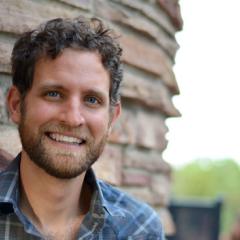David Ciplet's thoughts on the Paris agreement
Editor’s note: We asked 2012 Switzer Fellow David Ciplet, Associate Professor at the University of Colorado Boulder, for his thoughts on the Paris agreement.
Journalist George Monbiot wrote of the Paris climate deal, "By comparison to what it could have been, it’s a miracle. By comparison to what it should have been, it’s a disaster." Proving Paris was not a disaster will mean bridging three main gaps left in the wake of this historic agreement. First, we must bridge the temperature gap. Paris kept alive an aspirational commitment to keeping temperature rise below 1.5 degrees Celsius, the threshold at which entire countries may be swallowed by rising seas. Achieving this will mean a total phase out of fossil fuel use worldwide by 2025 to 2030, yet in more than 30 pages of the agreement, the words "fossil fuels" were not mentioned even once. Wealthy countries, such as the United States, have yet to commit to taking action to reduce climate pollution commensurate with our "fair share." We need nothing short of a revolution in how our energy, transportation and political systems are organized in order to make the necessary leap
Second, we must bridge the development gap. In Paris, all countries committed to fighting climate change. While the wealthy countries are still responsible for the majority of historical emissions, most future growth in carbon dioxide pollution is projected in poorer countries. But nearly a billion people still live on less than $2 a day in countries of the global South and their emissions per person are orders of magnitude less than those in the wealthy countries. Most global South nations will need large transfers of finance and clean-energy technology from the wealthy countries if they are to have any chance of transitioning to a low-carbon economy in the context of a destabilized climate and huge remaining fossil fuel reserves that must stay in the ground. India, with more than 10 times less emissions per person than the United States, and huge reserves of coal, has asked that it be provided $2.5 trillion in order to pursue a low-carbon development pathway through 2030, including major investment in solar energy. The 49 Least Developed Countries have asked for close to a collective $1 trillion over an 11-year period to make this transition.
Third, we must bridge the adaptation gap. One single storm, Typhoon Haiyan, killed more than 6,000 people in the Philippines in 2013. Those in the Least Developed Countries are five times more likely to die from climate-related disasters than the global average. The UN Environment Program estimates that climate change impacts in poorer countries will cost roughly $150 billion a year by 2025 or 2030, yet wealthy countries provide at least 10 times less than this in adaptation support. This is a matter of priorities, not economics: Hundreds of billions of dollars each year subsidize fossil fuel industries globally - the main cause of climate change - and nearly $2 trillion are spent on the military. In the next round of United Nations negotiations in Marrakesh in 2016, mechanisms must be established to dramatically and predictably scale up public funds for adaptation, particularly in terms of establishing a collective finance target beyond 2020, and to address the losses and damages experienced due to climate impacts like sea level rise, which are so severe that nations cannot adapt to them.
Additional Resources
Whose Lives Matter? A Crisis of Solidarity at the Climate Talks in Paris
How to bridge the climate funding gap for developing nations?
Why we (still) need the UN to deliver on climate change
